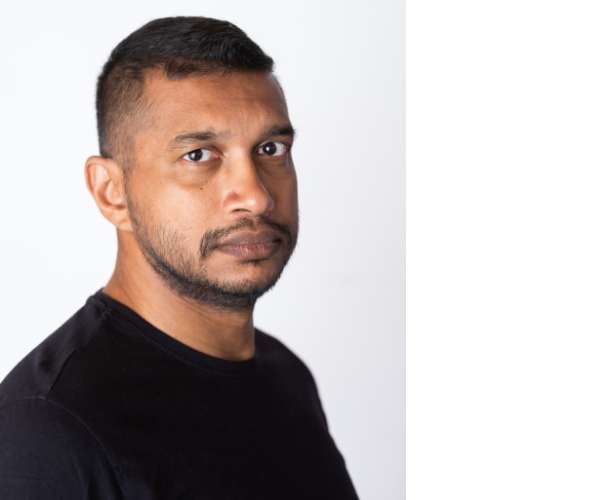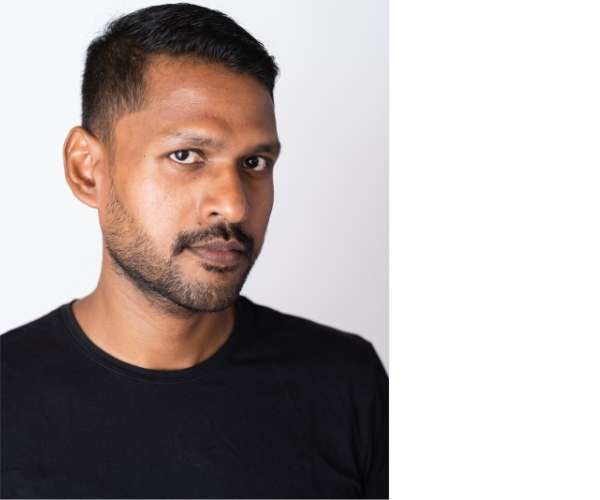It is with great excitement that we sit down to write this. Theatre? Now? It seems there are more than a few eager beavers counting down the days till they can take to the stage again after a year like 2020. The Broken Leg Theatre Company has somehow managed to do exactly that by presenting “Art” - A French play written by Yasmin Reza and later translated by Christopher Hampton – at the Lionel Wendt Theatre on the 25th, 26th and 27th of March 2021. Directed by Steve De La Zilwa, the play consists of a small cast of three – Lihan Mendis, Shanaka Amarasinghe and Chamat Arambewela.
Q What was it like coming back to the theatre and acting after a year like 2020? What is it like (as an actor) adapting to the “new normal”?
S - Rehearsing Art sporadically through 2020 helped keep us sane, I think. It’s only three people and two of us live alone so it was as risk-free as possible. Once the lights come on nothing will be any different, but the rehearsal and production process have been unfamiliar and often nightmarish. We will essentially be the guinea pig production for the ‘new normal’ (hate that phrase) in English theatre, so we are keen to get our protocols just right while giving patrons the kind of experience we want to.
L - Speaking about the year that passed, it was quite difficult to cope as an actor and a full-time theatre practitioner and really, we did at certain points feel quite starved and coming back to it, initially I did feel quite rusty but fortunately the events have unfolded in such a way that I feel like I am right back in the saddle right now.
C - It has been tumultuous. We are lucky to be able to put this play on boards. There’s a lot of uncertainty and for anyone in the performing arts, the only way to approach things is to accept the uncertainty and keep working at your craft.
Pictured: Shanaka
Q Who do you play and how did you prepare for your role?
S - I play Shehan. The buyer of the painting causes the entire play to unfold. Shehan was originally Serge, but we’ve adapted very slightly for local audiences. To prepare I’ve been haunting galleries for years and observing pretentious people with utmost interest. They don’t know who they are.
L - I play Ian. He is a bit scatterbrained and quite all over the place and he describes his professional life as a failure. Really, he is in stark contrast to the other two characters who seem to have everything together whereas this guy does not. In terms of preparing for the character, it was difficult because I do not necessarily feel like I totally identify with the character so intellectually it was a bit of an exercise to kind of figure out what makes Ian tick.
C - I play Marc, a ‘nostalgia merchant’ as labelled by my own friend in the play! Marc as a character was challenging - he is opinionated and self-centred - and my normal method of finding vulnerability and humanness in a character was difficult with Marc. After some hard work and a good dollop of introspection, I’ve come to enjoy playing the character and showing his flaws for what they are - being human.
Q Reading the script for the first time, which character most inspired you?
S - I played Yvan (Ian) in the last iteration of Art and I was fascinated by him. But that’s been done. I identify enormously with the character of Marc as well, especially when he says, “the older I get the more offensive I hope to be.” But Shehan is a challenge in terms of moving away from type. I think that’s been the case for the whole cast, and we’re loving the process.
L - I feel like I identify most with Shehan. He was the most accessible character and that was the one that stood out to me when auditioning for the play. I don’t know whether it is an inspiration necessarily but a character I definitely identified with.
C - I’d rather use the word relatable, than inspiring, in the context of Art. All three characters are relatable as you’ve come across the multiple times in your own interactions and friendships - the character I feel for the most (and the character I just want to give a big hug to) is Ian.
Pictured: Lihan
Q Reza’s work is said to question the subject of “Art” and “Friendship”. What is friendship, by your definition?
S - One of the characters in the play sums it up most elegantly, so I’ll not give it away, nor will I attempt to paraphrase an award-winning author, but for me…friendship is the ability to be vulnerable with someone without fear of judgment.
L - There’s this beautiful quote from 448 psychosis by Sarah Kane which my best friend sent me which is basically “What do you offer your friends that makes them so supportive?” and it’s really that. There are so many factors that define friendship but it’s those things you can’t explain. Those things are always in flux. Unsaid but felt. So, it's hard to define but it’s something you feel and something you know.
C - True friendship is hard, hard work, and the play does a great job in showing how brittle, on-the-surface friendships fall flat on their face. A true friendship needs constant work from both parties where everyone grows together, or amicably move on.
Pictured: Chamat
Q If you took your closest circle of friends, what are the qualities you appreciate about them?
S - This is a question that could take us down a very long road (that’s a quote from the play by the way)
L - The fact that my friends indulge me, and I really appreciate that about them. But along with that the fact they love me despite the many times that I’ve [wittingly and unwittingly] made a right royal fool of myself. What do I offer them that makes them supportive? I do not know.
C - To be kind and have your best interest at heart.
Q Describe the play in three words.
S - De Vita Beata.
L - Ian. Shehan. Marc.
C - Funny. Absurd. Serious.
To get your tickets for the show, e-mail brokenleg.lk@gmail.com. You don’t want to miss out!
By Vihan Wickramasurendra
Photo credits – Ruvin de Silva





0 Comments